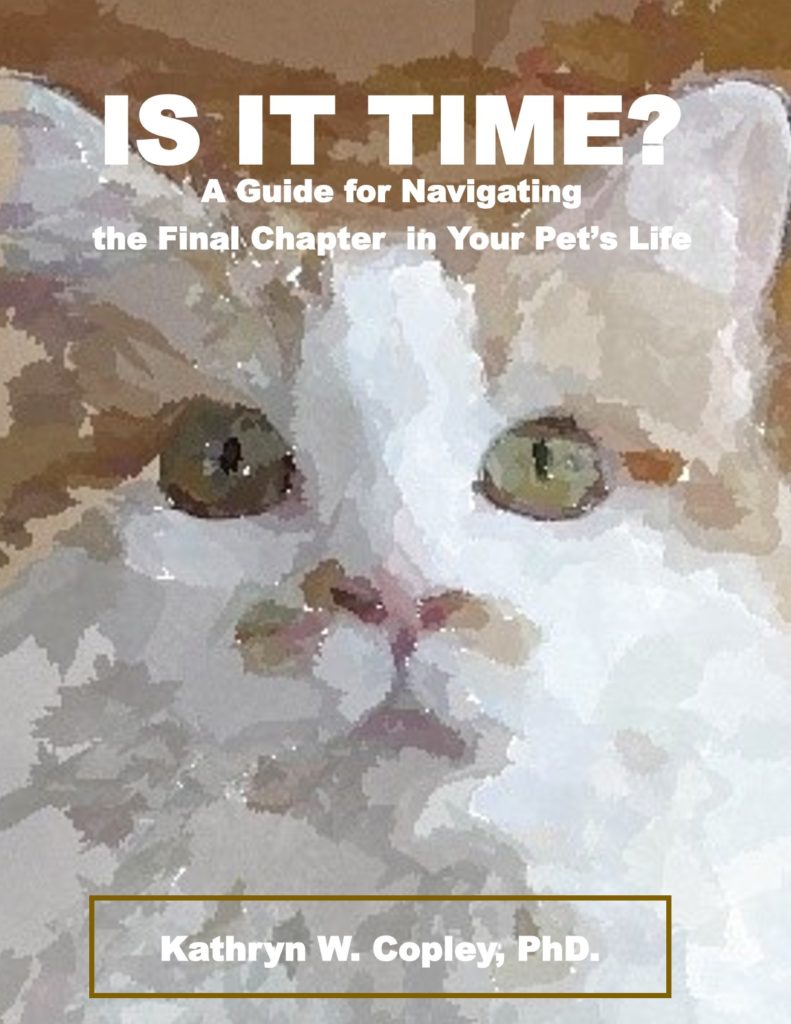A Framework for Ethical Decision-making was developed for human patients but its principles can inform end-of-life decisions about your pet.
Published with permission.

“In retrospect, I realize that my decision for Big Orange to have surgery and follow-up tube feeding and 2x daily sub-Q fluids was for me, not for him.” Kathy, who was owned by Big Orange
DIFFICULT DECISIONS
When you discuss your pet’s future with the other people in your and your pet’s life, you may discover that not everyone agrees on a course of action — more tests and treatment? Pet hospice care? Euthanasia? These resources — not specific to decisions about your pet — may help you have that difficult discussion:
How to Have Difficult Conversations When You Don’t Like Conflict (getpocket.com)
Stressing Out About a Tough Decision? Make it Easy with the 5-Minute ‘Ladder Rule’ | Inc.com
This Is The Scientific Way To Win Any Argument (And Not Make Enemies) (getpocket.com)
MAKING A DECISION
The moment will come when you have to make a decision. Sadly, because this is how life is, you almost certainly won’t have all the information you require to know whether it is the 100% right decision. Add to that the strong possibility that you will have less time than you want in which to make the decision. It helps to think of it as the best decision rather than the right one.
On the positive side, many decisions about your pet’s future can be made one step at a time, with the outcome of this decision narrowing or broadening the options for the next decision. Even in dire situations, the question is seldom at the level of “Should I euthanize Skippy today or let him die naturally?” It is more likely to be “Should I do this procedure (ultra-sound? referral to a specialty veterinarian)?” The results of that decision will reveal the options for the next decision.
Avoid an immediate decision if you can. Educating yourself can reduce fear and panic, lead to better decisions, and minimize regrets later. Make this decision guided by love, not fear.
Following steps for making a good decision can remove obstacles
- Identify your values and goals. You doubtless place a high priority on your pet’s comfort (a goal). If euthanization runs counter to your personal values, then you will have different options to consider from someone who believes it is moral to relieve an animal’s suffering through euthanasia. No decision should stain your spirit. Life’s most enduring regrets are those that move you furthest from the person you want to be.
- Gather information from trusted sources (all the while knowing that too much information can be as paralyzing as too little). “Information” includes the opinions of significant others who will be affected by the decision and play a role in its implementation. It may also include talking to your pet. If hard data is your style and time allows, repeatedly (over a period of days and weeks) complete acute and chronic pain scales and quality of life scales to quantify progress or deterioration.
- Create the most stress-free environment possible in which to make the decision – take a walk, sit in the sun on the porch, hold your pet on your lap and pet it,….To the degree possible, give yourself the time required for a well-thought-out decision.
- Identify all the available options and weigh the pros/cons and consequences of each. This will help you eliminate some options. As you consider consequences, weigh the probability of that consequence and how good or bad it would be if that consequence occurred. The if/then rule may help: if the test shows the cancer has spread beyond the identified tumor, then….
- As you narrow the options, consider what support you will need in order to implement each of them. If the needed support isn’t currently in place, what will it take to marshal it?
- When you have done the steps above, what advice would you give a friend? What does your heart say? Trust yourself and your instincts.
- Make a decision – without implementing it — and test it by asking yourself questions like these: If I told a respected friend — or a television audience — what I decided, how would they respond? Whether someone else would have made the same decision is a consideration in testing your decision, but it isn’t the real issue. Does it still feel like the best decision? You are free to change your mind.

All the named animals pictured in this blog were someone’s treasured pet. They may have crossed the Rainbow Bridge, but their absence makes them no less beloved.


I may not know what tomorrow will bring, but remember…today I have you.
